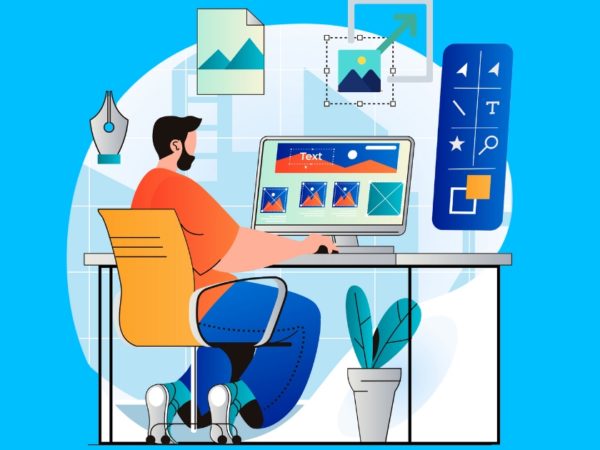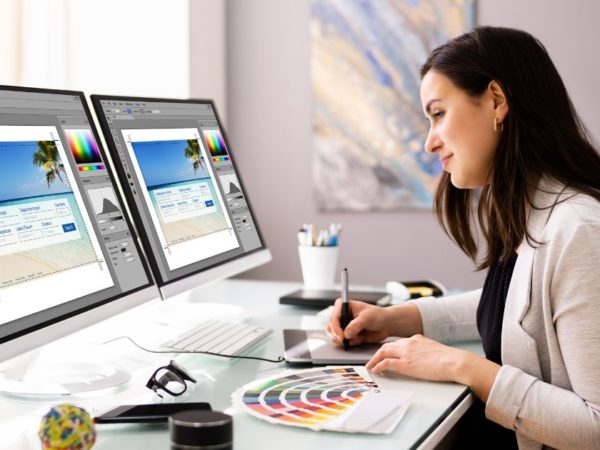Mood boards can align the design process, avoid creativity blocks, and keep your ideas organized. This article covers everything about Mood boards.
Designers and creators have much to do when working on a project from scratch, from project planning to the final project. And it is natural for them to get stuck in the process or get a creativity block.
When this happens, the Mood board can work like a life savior for them. It helps a designer to organize their design ideas in one place, and even they can show these mood boards to others and say what the final result will look like.
In this article, we will discuss what mood boards are, what types of boards are, and how you can create an outstanding mood board and ace any project.
What is a Mood Board?
A mood board is a popular designer’s problem-solving tool, though it is not new. It is a collaboration of the senses that stimulates creativity and leads to design solutions.
In addition to defining a color palette, you can use them to create a graphic identity and feel, simplify the essence of a brand or product into one image, or shorten the distance between an idea and its final manifestation. Thus, it helps a designer throughout a project’s journey.
Who Uses Mood Boards?
Designers mostly use mood boards to streamline their thoughts, be they graphic designers, interior designers, photographers, UI designers, etc.
Moreover, non-professionals can also use them to achieve more personal goals, such as decorating their walls or projecting a particular mood through their wardrobes.
Also, mood boards are not just limited to design purposes. For example, writers can depict a certain writing style or a fictional setting for a plot.
Mood boards, to put it briefly, are a helpful visual tool for quickly conveying a project’s general “feel” to others. They are used for more than just home décor. Mood boards support the creative process by balancing organization and artistic freedom.
Why Use a Mood Board?
Using a mood board helps create a gist of the final output of any project or artwork. When planning a new project, whether an app, a website or something else, it can take effort to figure out what you want that thing to be like. You have lots of ideas swirling around in your head, but they’re all jumbled together, and it’s hard to figure out which ideas are right for your project.
Therefore, mood boards are a great way to combine all your ideas for a project and make them easy for others to understand. They help you think about your project’s overall theme, feel, and look and what you want to communicate with it. In addition, here are some benefits of creating a mood board.
Benefits of Mood Boards
- They help you design for your target audience.
- Boost your visualization of “how will the final product look like?”
- They help you play with different color palettes.
- It shortens the overall design process.
- Boosts creativity and organizes ideas.
- It helps you experiment as much as you want.
- It helps you to convey your ideas to the client easily.
Types of Mood Boards
There are two ways to create a mood board. First is a classic physical mood board or a modern digital mood board. Moreover, it depends on your requirements type of project you are working on.
Let’s check the use cases of physical and digital mood boards.
#1. Physical mood boards
Physical mood boards are made using actual materials—paint swatches, fabrics, paper samples, etc.—and are often hung in a common area so everyone can see them.
It is ideal if you want to create your desired brand look physically. You can use real materials or print out pictures of them and pin them up.
#2. Digital mood boards
Digital mood boards are created using software like Adobe Photoshop or Canva. These are also called “virtual” mood boards because they don’t involve physical items other than the computer screen they’re displayed on.
It is an ideal option if you prefer to avoid having a physical display in your office or conference room; Moreover, they can be shared instantly with others and require less effort than physical ones do (which means they’re usually temporary).
Furthermore, you can get design inspiration from websites such as design seeds, coolers, design galleries, Pinterest, and other social media channels.
What Should a Mood Board Include?
Whether you are creating a physical or digital mood board, you need the following things to create a mood board.
Photographs/images
Include images of things that inspire you, such as pictures of products or websites with similar designs and styles to your own; anything from nature scenes to architectural photos will do!
For a physical mood board, you can print out the pictures you like or cut them out of your favorite magazine.
Brand colors and logo
Using creativity to maintain a brand color scheme makes a project stand out and speaks for the brand. Before creating a mood board, you need to choose the colors. You can take inspiration from a brand logo if you are working on a particular project. Or, You can choose colors that are appropriate for your project.
You can use paint swatches, fabric swatches, or even magazine clippings for a physical mood board. You can take inspiration from websites such as coolers, and online color palettes, for a digital mood board.
Design elements (like frames, borders, and textures):
Materials, prints, and textures can be included in mood boards to improve the final product. It allows the design presentation to have depth and variation. In addition to color blocks, prints add vibrancy and a new feel to a project.
Text Content
Add text to describe different elements on your mood board.
How to Make a Mood Board?
Here are the points to keep in mind while creating a mood board:-
#1. Collect inspiration for a mood board: The first step is to collect things that inspire you, for example, images, fonts, textures, typography, etc., and create a project outline.
#2. Use images that fit well together: Next, choosing images that work well together is important – they should all share similar colors and tones, or at least not clash!
If you’re using photos of people or locations as inspiration, ensure they’re all in black and white so they’ll look good together when printed out on paper (and not on color printing paper).
Be sure to crop them down, so they don’t take up much space on your board – this makes it easy for others to see what’s going on without squinting tiny words or photos!
#3. Pick colors and fonts. After that, you should choose colors and fonts that match your board. It will help ensure that it looks professional and organized.
#4. Add words to explain your ideas. It helps put your ideas together and ensures your board has enough words, and gives you more ways to explain your concepts.
You can use arrows or arrows pointing in different directions to show how things are connected. You could also draw pictures – like people using a product or service – to illustrate what you’re trying to convey.
#5. Add logo, website, and social media profiles: Last but not least, If you have a logo for your business or project you are working on. You can also include links to your website and social media profiles so people can easily find more information about your brand, especially if you are working on a digital mood board.
#6. Organize your board: Once everything is on your board, it’s time to organize everything. You’ll want to put similar items next to each other so people can easily see how everything fits together.
Mood board examples to inspire you
Conclusion
Mood boards surely make the whole design journey easy and interesting. Moreover, a mood board helps you to get rid of creativity blocks. You can create a mood board per your needs and preference and enjoy the whole design process.
There are mood board maker tools that can help you design mood boards for your brand or business easily.
So, Impress your client with a studding mood board and let them feel the final product.



![Kirelos Blog 8 Best Landscape Design Software for Professionals [2023] 8 Best Landscape Design Software for Professionals [2023] Design](https://kirelos.com/wp-content/uploads/2023/11/26651/8-best-landscape-design-software-for-professionals-2023-600x450.jpg)